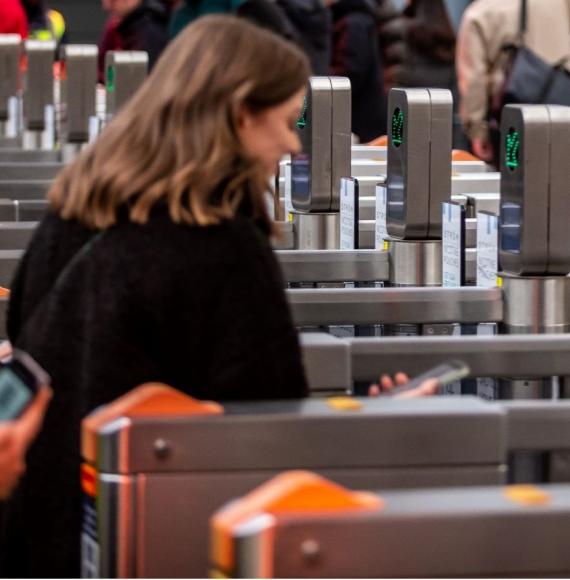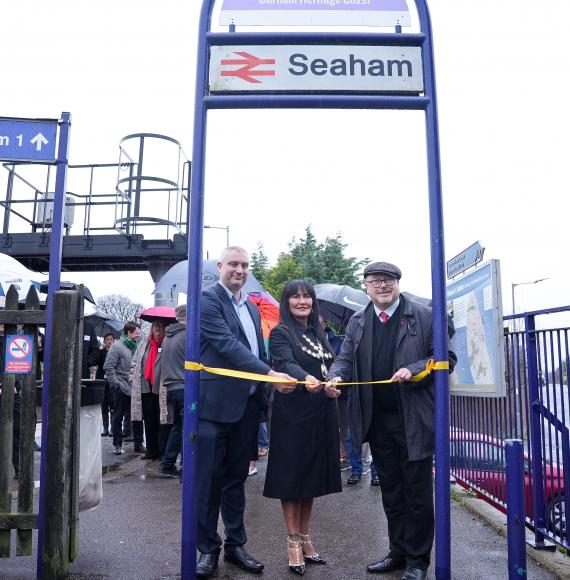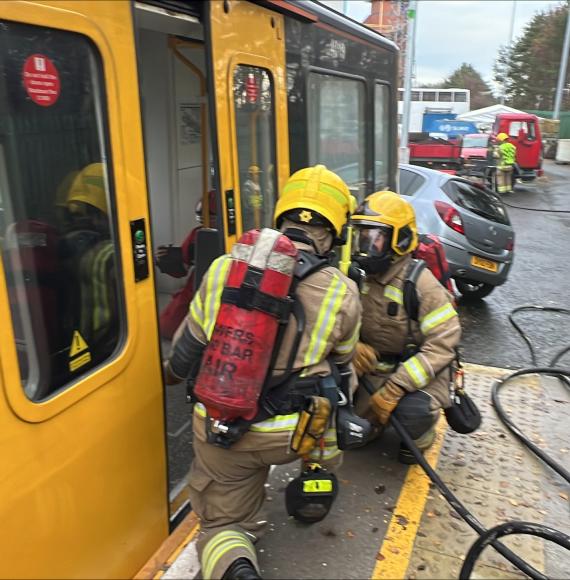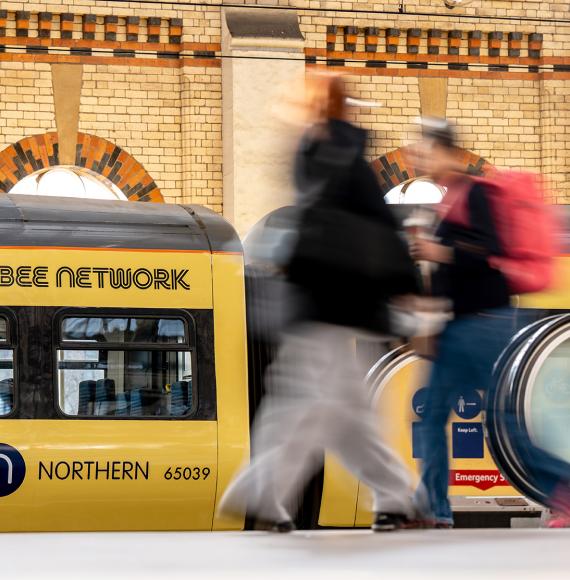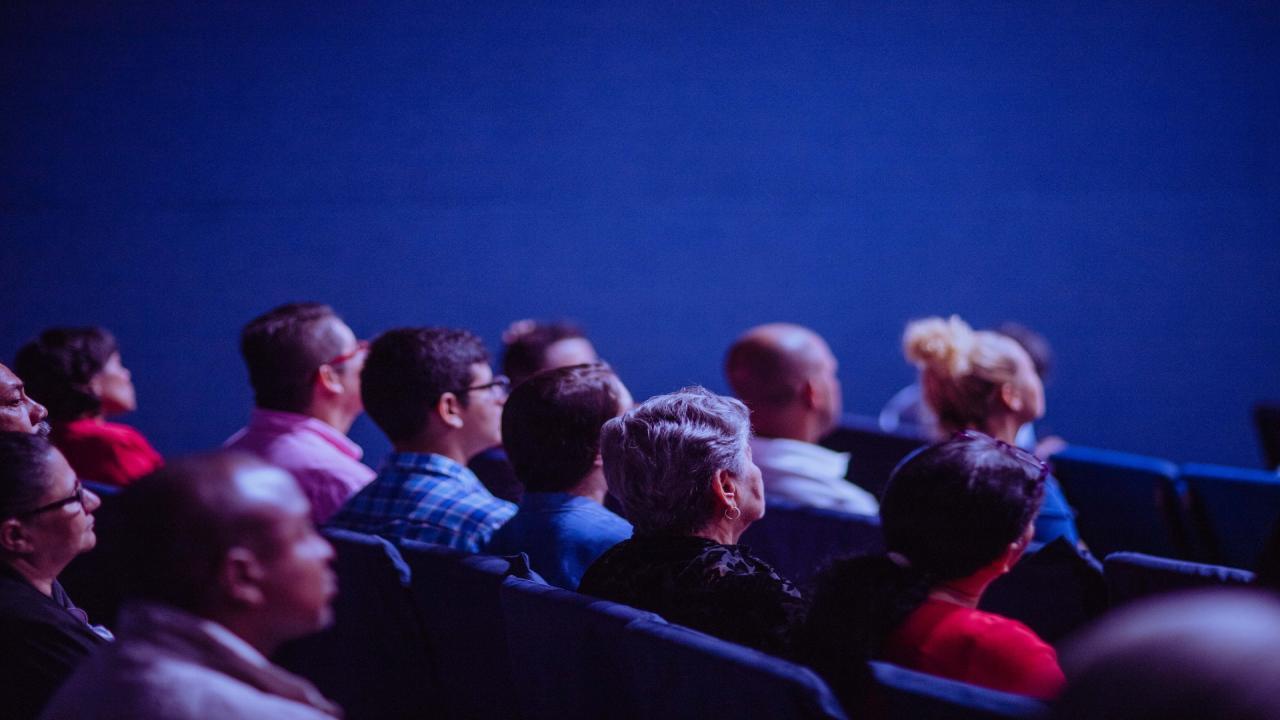In this exclusive Q&A, Paul Chelin, Principal Digital Engineer at SYSTRA UK, shares his journey of developing 4D planning capabilities over the past six years. From his initial presentation to the TRU Alliance in 2019 to achieving significant milestones on the TRU Project, Paul discusses the challenges, successes, and the transformative impact of 4D solutions on large infrastructure projects.

Question: Your journey in developing 4D capability at SYSTRA UK has spanned over six years. Can you walk us through the key milestones from your initial presentation to the TRU Alliance in 2019 to winning significant fee-earning work on the TRU East Project?
Answer: Well, my journey began back in 2019 when I presented the potential of 4D planning to the TRU alliance at the Rock in York. My key milestones include our first instruction on TRU in 2022 – it took three years. We weren't dormant in those three years, we were very active trying to push for the implementation of 4D on the project. We embedded the 4D solutions into the mainstream planning of Neville Hill Christmas blockade, and that involves scaling into significant fee-earning work on the TRU project.
The success of the Neville Hill Christmas works led to us being instructed to undertake 13 complex bridge reconstructions, two complex trap renewals, six route visualisations, four compound visualisations, and also assembling a dedicated team to work on that project to deliver 4D and visualisation. It was a great moment for us to actually change the requirements on a project to incorporate this technology.
Question: What were some of the biggest challenges you faced in establishing 4D planning solutions at SYSTRA UK, and how did you overcome them?
Answer: There's always challenges along the way but I look at challenges as something that we can always overcome here at SYSTRA. So the biggest challenges were securing buy-in from stakeholders. It's all about managing to get their buy-in and proving what 4D can bring. So we overcome this through early 4D visualisations for the complex reconstructions, supporting assurance reviews, and highlighting the value of digital rehearsal.
The continuous engagement with project teams enabled us to demonstrate the tangible benefits. We collaborated – we managed to slowly get them on board. I think that anybody that doesn't see the value of being able to digitally rehearse – before you get into reality on site – [I’d tell them] it's a no brainer.
I've recently published a report, that's entitled ‘Enhancing Rail Safety Through 4D Digital Rehearsal’. This is a proactive approach to reducing major injuries and fatalities during track possessions. I think that it's something that shouldn't be overlooked – it should be highlighted – we're looking at this becoming a game-changer. We want it to become a requirement on future projects.
Question: Developing a successful team capable of delivering complex 4D planning solutions is no small feat. How did you build this team, and what key qualities did you look for in your team members?
Answer: Building a capable team required a mix of technical expertise, creativity, and a passion for problem-solving. I initially led a steering group of individuals who were not only technically strong but also adaptable, collaborative, and eager to innovate using new softwares.
So, it was our success at delivering 4D visualisations on TRU and then winning the technical team of the year in 2023 that led to the creation of the 4D visualisation and innovation team. So, we're developing capabilities to deliver innovative solutions to support our design teams and deliver on project requirements.
We’re continuing to build that team, as project demands increase, and we need to increase our capabilities and we need to respond to the ever-changing demands that these new projects bring.
Question: For those who may not be familiar with 4D planning, could you explain the value it brings to large infrastructure projects like TRU East?
Answer: I can. 4D planning integrates time, which is the fourth dimension, with 3D models. So, it creates a powerful tool for visualising project progress, and highlighting risk activities – it helps see potential conflicts before they occur while optimising workflows and improving coordination – particularly on large infrastructure projects like TRU.
So, the ability to digitally rehearse complex construction activities virtually leads to a better understanding of the reality on site.
Question: How did you gain awareness of the value of 4D planning within the organisation and the wider industry as well? Were there any key strategies that helped you in driving the awareness?
Answer: I think this is a great question because we realised that we needed to raise awareness by demonstrating the efficiency and safety benefits of 4D planning in real-time project environments. We held workshops [and] we supported constructability reviews, both internally and through external presentations where these key strategies helped gain traction – both within SYSTRA and across the industry, particularly on the TRU project.
The key drivers were engaging with the planners the construction partners and also site operatives. This all led to an increased awareness and, as people become aware, they realise the value that it can provide.
Question: What were some of the major 4D Planning solutions implemented on the TRU East project and how did they improve project outcomes?
Answer: On a significant infrastructure project such as TRU, where BIM level two requirements – which is a 2016 government mandate to aid the development of a project to avoid clashes and lots of other issues – 4D can be used to enhance the sequencing of these construction phases. So, it can manage track possessions, it can identify risks, it can reduce clashes between work packages which are sometimes overlooked.
All these solutions lead to improved coordination, a reduced level of rework, and a more efficient and safer project delivery, so it comes hand-in-hand with these significant projects.
We sometimes get a little bit frustrated about why we should have this struggle to try and push this on a project of such significance. – and it's not only on this project – there are other projects such as HS2 where we're implementing these solutions. We're slowly gaining traction.
Question: Can you give me some examples of how this software has prevented potential hazards during the TRU project?
Answer: Yeah, I can – 4D planning identifies potential risks by visualising overlaps between work sites and track usage. For example, it's helped prevent scheduling conflicts that could have posed a hazard for both workers and ongoing rail operations. Traditionally, these issues have led to costly overruns and accidents.
So, from a traditional way – whereas there are toolbox briefings etc. and possibly 2D PowerPoint presentations – it is still difficult to gain a full and complete awareness.
So what does a visualisation really bring? It brings an instant awareness of the job in hand and it also engages with people so that they can challenge and they can understand and they can hopefully get a full and complete awareness before they're actually out there on the coal face, so to speak.
Question: How has the software influenced workforce behaviour?
Answer: The software has fostered a more proactive and collaborative approach. It means that teams can visually assess the project's progress and details and risks – the transparency improved communication, decision-making, [ultimately] enhancing overall project safety and efficiency.
To give an example, when I was just having a discussion at my desk, somebody who's disrelated and disconnected from the engineering function came down – I think this individual was from marketing – and she was just blown away.
She could instantly recognise the complexity and what was involved for the first time. It opens that transparency of engagement, and it can only be good for any project or complex activity on site.
Question: What lessons can be learned and applied to other large-scale infrastructure projects in the north?
Answer: The importance is predominantly early adoption – engaging with stakeholders at an early stage and using the 4D planning tool, not just only as a tool for planning, but for optimising project execution.
These strategies can be applied to large-scale infrastructure projects across the board but the ability to provide scenario planning, to look and challenge a programme by rearranging activities through driving efficiencies means that, historically where a lot of activities have been planned in parallel and on-site in realistic terms, they're really difficult to orchestrate, through actually analysing that in the virtual world.
I'll give another example. Many moons ago, when I went to a conference for 4D, one of the presenters said you would not expect a football team to go in without a level of rehearsal and carry out that match. Why should it be any different in construction? So that's my whole argument.
Question: Now, congratulations on winning the technical team of the year at the SYSTRA Excellence Awards 2023. What do you believe set your team apart to earn this recognition?
Answer: I think our success at the SYSTRA Excellence Awards was driven by our innovative approach, our technical expertise, and commitment to collaboration. We were able to prove the real-world value through improved project outcomes, setting us apart from our competition.
We had a lot of very, very constructive feedback from our alliance partners. We had a lot of testimonies that we dissembled following the success of our work, so we were able to present that in an intelligent, translatable manner that led to us being the winning team, which was absolutely fabulous.
It's no one single effort – we're a great team and collaboratively we've engaged and we've demonstrated [that], on a project like TRU, that we can be successful.
Question: You also won the prestigious Network Rail SHELT award. Can you share more about this award and the impact it's had on your team and SYSTRA UK as a whole?
Answer: I didn't realise how significant this award was until some of the directors were talking to me and said, ‘It's unique to go to a design team’. The SHELT award celebrates the sharing of best practices, lessons learned and strategic implementation in health, safety and environment arrangements.
So, winning the award is a testament to the innovative spirit and dedication of our team, who have tirelessly worked to revolutionise how complex construction projects are planned. Winning the Network Rail SHELT award was a testament to our team's focus on safety and sustainability – it has elevated our reputation within the industry and reinforced the importance of integrating safety considerations into 4D planning.
We see 4D construction planning as an essential part of complex construction, where the ability to digitally rehearse and understand methodologies, highlight risk activities and provide assurance that projects can be delivered on programme.
So, it's an essential part of the overall requirement, that success wouldn't have been possible without the incredible support and engagement from our alliance partners on TRU East. Their confidence in our capabilities and collaborative spirit has been instrumental in meeting our deadlines and achieving this milestone.
It's great to have been acknowledged for the hard work and effort but everybody's played a part in the role. We work as part of an alliance on the project and they have seen the value in what we do and, in turn, our employer Network Rail has recognised us through this award. So, a really fabulous achievement.
Question: Now, in your experience, what does it take to create an award-winning team in the rail infrastructure space?
Answer: An award-winning team needs a shared vision and dedication to innovation combined with a willingness to push out boundaries. Rail infrastructure is an inherently difficult and slow-moving world compared to the wider construction industry. This means not only meeting our client expectations but anticipating the challenges and delivering cutting-edge solutions. So our 4D construction planning and visualisation initiative is set to be a game-changer within the industry, enhancing project efficiency, safety and collaboration.
Question: Now you're about to launch SYSTRA Vision at TransCityRail North in November. Can you give us a sneak peek of what this vision entails and how it ties into the future of 4D planning?
Answer: We're really excited about this. SYSTRA Vision will focus on the future of rail planning, leveraging digital twin technology and AI-powered analytics. Our aim, here at SYSTRA, is to create a more integrated, data-driven approach to project delivery with 4D planning at its core.
SYSTRA Vision equips principal contractor licence holders with the ability to meticulously visualise every phase of their project. So, from planning through to execution, SYSTRA advanced tools significantly reduce risks, enhance safety protocols and ensure seamless project delivery.
Question: Now, as you prepare for this launch, what are your key goals for SYSTRA Vision and how do you see it shaping the future of 4D planning and delivery within the rail industry?
Answer: Our key goals? Driving greater efficiency, improving safety and enhancing sustainability in rail projects. We see SYSTRA Vision shaping the industry by setting new standards for digital collaboration and project execution.
Our expert team collaborates closely to ensure that every detail of a project, however large or complex, is captured and risks are highlighted. By simulating every step of a project before the ground is broken, you can identify potential outcomes, streamline workflows and ensure safety protocols are fully integrated from day one.
SYSTRA Vision visualises the future but safeguards the present. We aim to reduce unforeseen risks with the initiative of taking hazard identification to a new level, increasing safety and assurance by visualising complex project phases and ultimately combining this with saving time and money, streamlining, planning and the execution process.
I think that we can really drive value on projects and this will become our USP and key driver on all projects where complex blockades and tight timescales are a key driver for our clients.
Question: Now, reflecting on your journey, what do you believe has been your greatest contribution to both SYSTRA UK and the TRU East project?
Answer: I think my greatest contribution has been embedding 4D planning as a core capability within SYSTRA UK. Before I entered the business, it was something that we knew others did, but we didn't do this within our business.
It's the role that's transforming project delivery within SYSTRA and also on TRU projects. It's improving both efficiency and safety outcomes, so I think that is possibly one of the greatest contributions that I have been a part of.
Question: And, looking back over the past six years, how do you feel about the impact your work has had not only on your projects, but also on the wider rail infrastructure sector?
Answer: I think now we're beginning to win awards, it's clear to see that we're actually being recognised for the great work that we're doing here at SYSTRA. I'm proud of how our work has influenced not only just the TRU East project, but is now influencing the wider industry.
That is through the recognition of the SHELT award – it not only recognises what's great on projects, but how that influences the wider industry.
The adoption of 4D planning is becoming a standard on large-scale infrastructure projects. We've been transformative and I believe that we have helped the way in which this transformation is now taking place.
This technology will be on display at TransCityRail North in Manchester this week. More details here
Photo Credit: iStock




